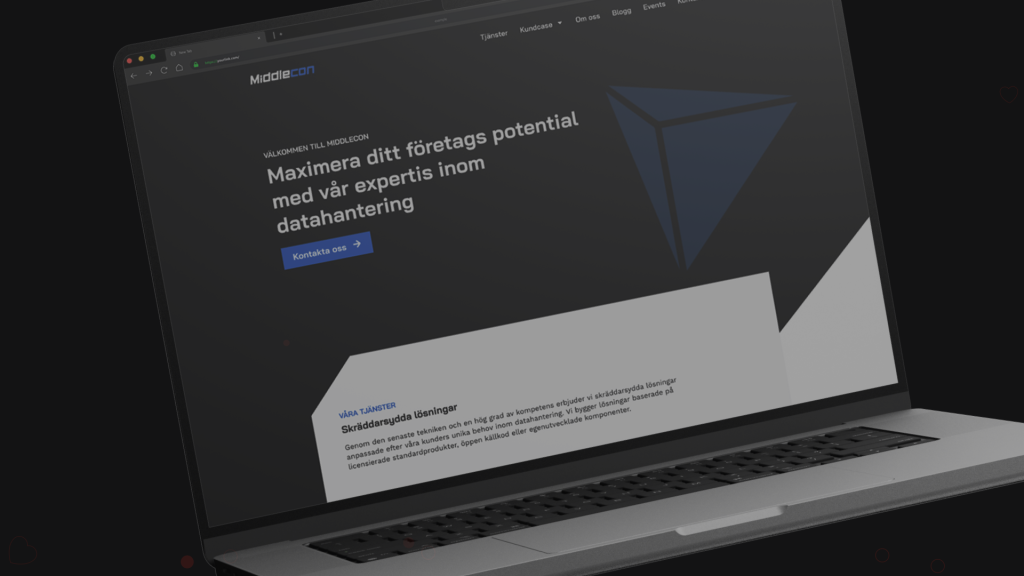Somewhere in Zagreb, one project team is at its’ workplace from early morning. In dedicated project room white walls are placarded with huge flipcharts, full of post-it papers with a bunch of information on them. The morning coffee is being drank and plans for the following day are being made. Apparently, everything seems as usual, but yet, certain nervousness is noticeable. It’s Friday, end of the sprint and the day when the team presents its bi-weekly progress. Nervousness is however positive because team members are happy with what they did, and they believe others will be as well, since during the whole sprint they were in direct contact with the clients who have guided them during implementation and gave them useful information.
The client representatives and other interested parties attend the two-week progress presentation. Team members jointly present what has been carried out, each of them their part according to agreement. The client is satisfied with what he sees. And while they’re watching how the vision of the product is being materialized in front of their eyes, they are coming up with new ideas how to make it even better. Client representatives shape their ideas through a constructive discussion with the project team. One of them is really great and it refers to a new system feature that will greatly help the end-users with their daily work. Although completely unplanned, the new feature will start with implementation with the next sprint, and apparently revolutionize the way organization operates. Positive energy fills the room while client and project team realize that by working together and relying on their own experience from the previous sprints, they have managed to create a product that meets the customer needs incredibly well, which at the beginning of the project they couldn’t even imagine…
This one is a true story. I have personally experienced it before a month or two while working with our clients as an agile coach, being one of the several coaches from CROZ. The moment in which the organization experiences the benefits of the agile development methods frees up an incredible amount of enthusiasm and people realize that they can do everything. Sky’s the limit. As long as my colleagues and I feel so while coaching, we’ll never get bored because it’s a real confirmation that we do our job well.
CROZ’s agile journey
Our first experiences in the application of agile development methods began before many years. At first it was localized and applied on small projects, but the initiative of introducing agile methods started spreading on to other projects. Initial benefits, brought by better communication with the customer and the concept of iterative and incremental development, became evident very quickly. There were also some additional advantages revealed as time passed. With the increase in the number of projects it became clear that the traditional approach to project management, which begins with the formation of the project team, is not always functioning well. Building a new project team for each project is extremely expensive, if you take into account that it takes between 6 and 12 months to get a group of people turn into a functional team. Many projects don’t even last that long, which implies that a functional team never works on a project and the organization, metaphorically speaking, runs in the first gear. We found the solution to this problem in the agile principles that promote long-term, multi-functional teams. By maintaining and promoting long-term teams, we give the members enough time to get to know each other and become a functional team.
For a long time now, CROZ has been applying internally the principles of agile software development. We also share good experiences with our customers and lately we do it mostly through specialized consulting engagements involving the implementation of the agile transition. One of the first engagements regarding agile transition was the project in Iskratel, a large Slovenian manufacturer of telecommunications equipment, where we established the development team and have introduced Scrum as an agile method of development.
In addition to the consulting arrangements, we share our experiences continuously on the yearly QED conference that gathers our customers and business partners. A dear and always welcome guest at our QED conference is Andrea Tomasini, one of the founders of the company agile42, an agile coach and a consultant who has over the years launched numerous agile transitions in large companies such as Ericsson.
How we met agile42
More than ten years of experience in software solutions development have shown us that agile approach is the only sustainable approach. Without early user involvement and iterative and incremental approach that quickly brings the value and allows quick direction corrections, it is difficult to keep up with today’s dynamic market. Therefore, we are continuously applying agile principles in our own company. Agile concepts do not only apply to service organizations such as CROZ. They are even more applicable in the product-oriented organizations, regardless of the industry. Our desire is to introduce agile concepts to other organizations and continue with our own improvement in order to support them in the process of agile transition, regardless of their size and area of business. In order to exchange valuable experience and enhance our own methods of coaching we cooperate with renowned companies and experts. We are particularly proud of the excellent cooperation with the world-renowned consulting firm agile42 who has years of experience and a unique approach to projects involving the introduction of agile principles in the organizations around the world. With headquarters in Berlin and branches in the US, Canada, Germany, Netherlands, Denmark, Italy and Finland, the company employs 30 certified experts and carries out projects involving the transition of various organizations on to the agile way of functioning. Since its establishment in 2007, the company has successfully led the transition process in organizations of various profiles, such as large multinational company Siemens, Sony and Mitsubishi, mid-size companies like Ericsson Nikola Tesla, Ableton and Chip, but also start-up companies such as Babbel, Juwelo and eBuddy.
agile42 is also a company with the largest number of certified consultants with the highest level of knowledge of the Scrum framework according to the Scrum Alliance organization. Even six consultants boast the title of Certified Scrum Trainer! The company provides consulting engagements worldwide. Although they are best known for conducting agile transition engagements, they provide a range of accompanying consulting services in areas that directly support the transition. This is primarily related to the support of the implementation of organizational changes, as well as the technical practices that support the development process and enable a quick response to the changes which is the core purpose of the agile approach.
We started our journey with the agile42 in 2012 at a conference organized by the Agile Croatia association which was held within our QED conference in Zadar. On this occasion Andrea thrilled everyone with his excellent lecture on agile principles. We stayed in touch and after the conference, and soon the idea of closer cooperation has been brought to life. Our experiences in the application of agile development methods were growing and the idea of cooperation was concretizing until it took the form of partnerships.
Beginning of a beautiful friendship
Continuous collaboration between CROZ and agile42 culminated in an exclusive partnership for the area of Croatia, Serbia and Slovenia, which was officially announced a year ago. The partnership has laid a solid foundation for future collaboration and made possible joint work on consultancy engagements, as well as continuous improvement of all involved participants through joint work and knowledge and experience exchange. Shortly after the partnership was implemented the first consultancy engagements in which our consultants and agile42 worked together started.
Although all projects of agile transition have the same goal – the introduction of agile principles in the organization – their implementation differs depending on the business domain in which the organization operates, and on the selection of a pilot project. It is the task of the coach to introduce agile principles in the organization and help people to quickly accept these principles and easily apply them in their daily work.
Selection of a pilot focused on software development will put emphasis on technical practices that support the agile principles. Such practices include test-driven development, pair programming, continuous integration and so on. The pilots who are focused on the development of completely new products are facing different kind of challenge: how to, in the shortest possible time, learn enough about the customers and their needs in order to build a product that users will love and that will ensure the growth of the organization. In doing so, they use different techniques, such as the famous Lean Startup. The diversity of organizations and activities they deal with demand from coaches to be technically and methodologically well-grounded. Besides all that, coaches must have good communication skills in order to understand the challenges that users face and assist them to come up with a solution.
Education in the spotlight
In addition to the joint work on projects, the partnership ensured our consultants to participate in internal educational activities of the company agile42. Our consultants are involved in the company official educational program within which they mastered a complex three-month program agile42 Certified Team Coach. I am proud to say that I’m a member of that team. Abovementioned program improves skills in agile coaching, but also the overall, systemic coaching. Although in both cases it’s about types of mentoring, there are subtle differences. Agile coaches are also experts in their field and while working with team members they rely on the existing methodological framework such as the Scrum. In this context, activities of agile coaches vary between mentoring and teaching. Systemic coaches on the other hand are not experts in the field in which they help team members. The premise of systemic coaching is that people already have all the necessary knowledge inside themselves, but they need guidance in order to apply it properly.
Activities of systemic coaches are focused on helping team members with setting their own goals, introspection and determination how it will achieve those goals. A good system coach helps the team members with the process by setting and achieving goals, but their knowledge and experience does not affect their decisions. In real life, while working with project teams, consultants have to use both coaching skills, depending on the situation they find themselves in.
Training program by company agile42 relies heavily on practical work. Working in small groups and under continuous supervision of experienced coaches, participants acquire new skills in real-time on workshops, but also through the work assignments (homework) that they have to do with their own teams in the period between the workshops.
And lots and lots of live communication
Except in the educational program, our consultants take part in regular events such as agile42 company internal conferences and coaching camps. Such events usually last for several days, during which coaches are staying in a separate location. Uninterrupted and fully focused, they present and adopt new techniques of working with teams, share experiences with the various projects and solve current problems together. Each organization is unique and has its own peculiarities and challenges which need to be conquered. Some are related to the organizational culture while others are more technical in nature. That is why the support of many trained consultants is priceless and thanks to their own knowledge and experience they can always offer an alternative view of the problem and their potential solution. Wisdom of the crowd in the act.
Cooperation between coaches is not limited only to the educational programs and internal events. It happens constantly through regular teleconferences and mailing lists through which coaches communicate regardless of their location and time zone. These mechanisms allow each coach to request and offer help at any time to colleagues who may be in a similar situation as he once was. This way coaches themselves work as a real agile team: by promoting diversity they form a multifunctional team capable to find the answer and provide guidance in any situation.
If, in the spirit of agile methods, we make a retrospective at the end of the first year of the partnership, we are pleased to conclude that we have jointly, as partners involved in two large agile transition, made a big step forward in the field of training and exchange of knowledge. There’s always space for further improvements and we dedicate time for thinking and working on it. The excellent cooperation between CROZ and agile42 gives us confidence that we will internally, but also with our customers, successfully steer on the course of agile transition. For, as we say here, “Agile is not a destination, agile is a journey.”
Marion Eickmann, CEO at agile42
How was the 2015 for agile42?
Last year has been very successful and intensive. Besides CROZ becoming our premium partner, we have opened agile42 in Turkey and connected with Scrum sensei in South Africa. With these activities we continued working on our vision of creating an international company for agile coaching, we’ve consolidated our presence in Central Europe, but also created a bridge to the South African and Middle Eastern countries. In addition, we published our Team Coaching Framework ™ (TCF), which provides agile coaches with different levels of experience to structure the work with teams by focusing on clear objectives and measuring process metrics. I am also very proud of the great success of Enterprise Transition Framework ™ (ETF), which many of our clients use for agile transition. A structured approach, clear involvement of company management and focusing on cultural change are differencing ETF from other agile frameworks.
It’s been a year since the beginning of our partnership. How you look at the past year?
Agile, but also agile42 as an organization, are based on trust, open communication, honest collaboration and transparency. With CROZ, we’ve found a partner who respects these values. Sometimes we have the feeling that CROZ takes part of agile42. J Projects on which we are working together are successful and create new opportunities. I cannot wait to see what the next year brings.
Given the current agile status, what do you think will be the trends that will intensify in the future?
Agile thinking has changed a lot in the past few years. Until now, Scrum and other agile methods were being used mostly by IT departments and development teams. Today, lawyers, advertising agencies and factories are moving to agile. Why is this happening? The essence of agile are people, apropos the way in which they work together, collaborate with clients and communicate with the team. However, agile grows and becomes more than that. It becomes a real way of designing and creating a modern work environment. In today’s world, people are not looking for a job because of the good pay, positions or locations. People like to take responsibility, love to be creative and love to be successful. I believe that the success is the biggest motivation in work. In this sense, the essence of agile is creating an environment and processes that enable people to achieve their business goals.
More and more companies understand it, and begin to follow the agile principles and create an agile culture. Although this is a great thing, there is a danger, especially for large global companies, who want agile but they want it too fast. Therefore they use the wrong, in my opinion pseudo agile approaches, or they are too much focused on agile practices, but poorly or not at all on the agile principles.
Alberto Barroero, Corporate Support Director at Intesa Sanpalo Card
How does the transition to agile methods helps your organization? What are the most important benefits?
Given that I work outside the typical domain on which agile influences directly, I’ll give you a small neutral overview of benefits. First, employees were given a new challenge in which they are protagonists and may succeed or fail based solely on their own work, which encouraged our IT and business teams. Secondly, before this agile initiative, we were constantly shifting between tasks and had a hard time finishing them. Because of that, employees were not happy. Therefore, the other benefit are the disciplines which helped us eliminate the constant switching between tasks, which we did by limiting the number of simultaneous tasks. Although we still have to improve ourselves and learn in teams how to better manage some smaller tasks that require a lot of attention, we like the time interval in which we came to the current level. Knowledge sharing is increased as well, and the team spirit is at a high level.
Agile approach forced us to re-arrange the current process of prioritization, through a committee which represents the entire organization. The committee is led by the business side and its task is sending prioritized tasks to the organization.
We have done office space reorganization as well, in accordance with the new team divisions.
What are the next steps in adoption of agile methods in your organization?
Except agile methods, a desire for lean process is vividly apparent in the organization. Kanban is popping up in offices and hallways like mushrooms after rain. We’ll support it even more since the change of the daily working culture is the thing we seek. We feel mature enough to adapt our formal organization to the agile one and we work on creating a new generation of product owners and product managers.
Do you have any advice for other organizations that are planning similar transition?
Go for it! Agile is a broad road of common sense and in it you will surely find a bar where you feel good. Mental and behavioral training during the transition period is always a good thing!
Dijana Hrastović, Board member at Zagrebačka banka
How much is the application of lean and agile principles in accordance with today’s modern trends in the banking industry?
All the banks today tend to find new ways of working: to be as close as possible to customers, simpler, more flexible, and also to meet the complex regulatory requirements. In this sense, the application of lean and agile principles in the development and implementation of new products and services can be very helpful. Putting focus on value for the customer, efficiency and transparency in the implementation of services and encouraging innovation are at the center of every conversation about the application of lean and agile principles. That is why we believe that the application of these principles is very much in line with today’s trends in the banking industry.
Which parts of your organization are involved in agile transition and in what way?
We have included top management of the bank, parts of the organization sector, parts of IT and Retail in agile transition. At this we are very “fresh” – we just started piloting methods on three projects. It is important to say that we have access the transition iteratively and incrementally. Our transition team manages and monitors the effects of the application of certain methods that are being piloted. Transitional tactic is adjusted due to a feedback we get from our teams. Teams from different areas of the bank are involved in the pilots, where each of the teams is directly aimed at preparing and delivering value to customers. So far, our experience says that the focus on the self-organizing multi-disciplinary teams is one of the most important gains we have experienced, and certainly represents an excellent basis for the further adoption of lean and agile principles throughout the bank.
In your opinion, which agile and lean principles and methods will bring the most benefit for your organization and why?
In the field of IT products and quality cooperation with customers we’re using the Scrum method. We have formed self-organizing teams that in two-week sprints incrementally deliver the value to the user. An essential feature of this method is that at the end of each sprint teams go through a retrospective, identifying places where their work can and should be improved. For this method to succeed it is extremely important that teams have the support of management in the removal of all obstacles they encounter. If such support and communication exist, the whole system becomes a so called learning organization, more prepared and faster in reactions to changes in business conditions.
In the project portfolio management part we begin with the application of the Kanban method, the value of which can be found in focusing on visualization of all units of work, monitoring so called end-to-end efficiency throughout the value chain system and management capacities through the concept of WIP (work in progress) limit. By applying Kanban we want to get the better insight into the implementation of the elements of our portfolio and improve planning based on end-to-end metrics.
Related News




